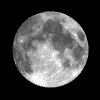Department of Physics and Astronomy: Publications and Other Research

Edward Schmidt Publications
Document Type
Article
Date of this Version
11-2015
Citation
The Astrophysical Journal, 813:29 (10pp), 2015 November 1
doi:10.1088/0004-637X/813/1/29
Abstract
Spectral energy distributions for 132 classical and type II Cepheids were searched for evidence of excess flux above the photospheric level in the mid-infrared. Eight of them were found to have unambiguously strong excess emission while a further 13 showed evidence of weak emission. The presence of emission appears to be unrelated to either the pulsational amplitude or the effective temperature while strong emission is limited to stars with periods longer than 11 days, with a single exception. For the stars with strong emission we attempted to fit the energy distribution with a stellar wind model. No acceptable fit could be found for silicate grains. With graphite or iron grains we could only obtain an acceptable fit if the maximum dust temperature was significantly lower than the condensation temperature. We conclude that the excess emission is not evidence of mass loss.


Comments
© 2015. The American Astronomical Society